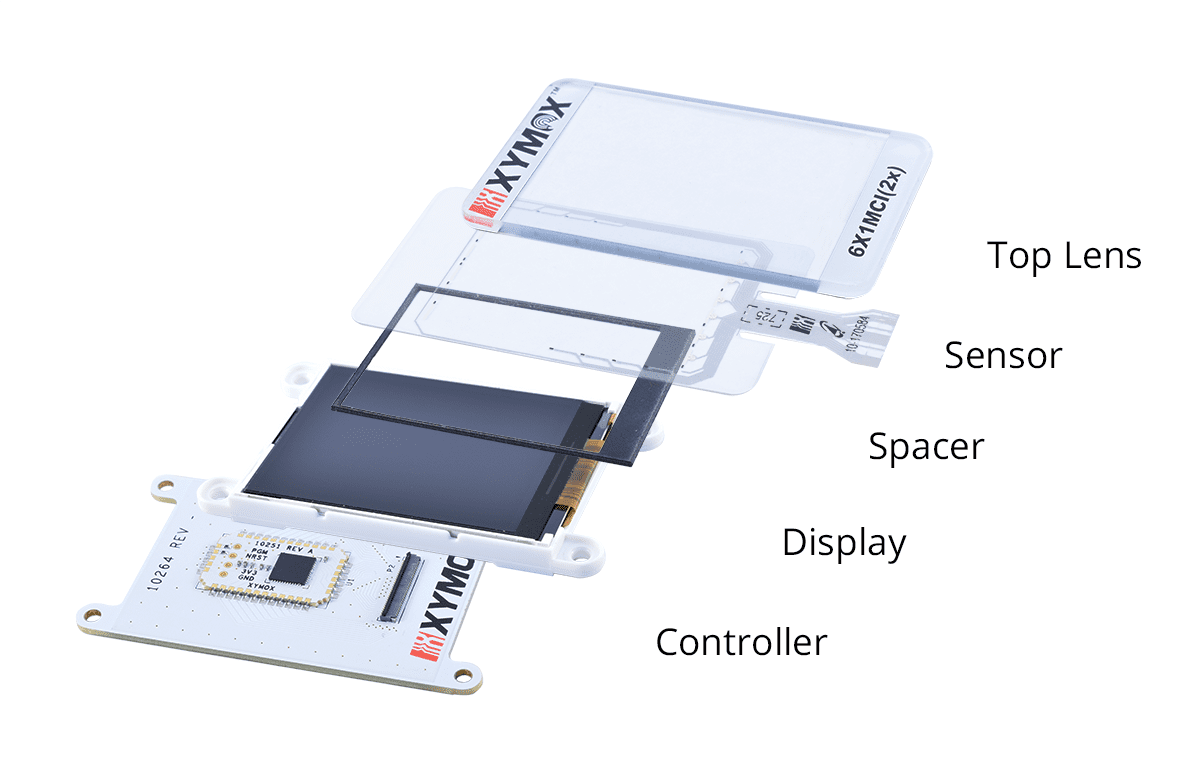Touch sensors have a lot of layers; the order and construction of those layers can greatly benefit the overall function and user experience, while also saving money in the long run.
Top Lens:
Acrylic, Gorilla Glass, Soda lime glass, polycarb….lots of options and each has its benefits. Choose the material best for your application and budget.
Acrylic – Cost effective and light.
Glass – Super tough against scratches, looks great, more expensive.

Laminate the Sensor to the Lens:
- Gets the sensor closer to the finger for best performance.
- Moves the sensor away from the electrically noisy display with a controlled spacer. Check out this blog post for more information on noise and the spacer.
- Display Insurance: if the display goes end of life, you don’t want your touch solution to go end of life as well. Keep them separated and make your life easier when the display needs to be replaced.
Sensor:
- Sensor style – matrix, discrete button, slider…lots of options and each has its benefits. Choose the sensor design best for your application.
- Matrix – Lots of flexibility for programming, more expensive.
- Discrete – Robust operation, ease of programming, less expensive.
- Tail location and length: one person’s definition of ideal may not be yours. Put the tail where you need it.
Controller:
Lots of options here..
Alsentis – Use with tough conditions, harsh environment; provides the most consistent end user experience. Exclusively used for discrete buttons.
Azoteq – Good general purpose unit for matrix and slider style sensors.
Key point – If your company has knowledge and experience with a particular brand of controller, stick with it unless it does not meet requirements.
Separate Controller Board:
- Cost – its typically cheaper to add a daughter board than a specialized FPC (flexible printed circuit) tail assembly.
- Controller choice – if you want, or need, a specific controller, this is a cost effective way to get what you want.
- Configurability – if you want or need to control the settings in the controller, this is a cost effective approach.
